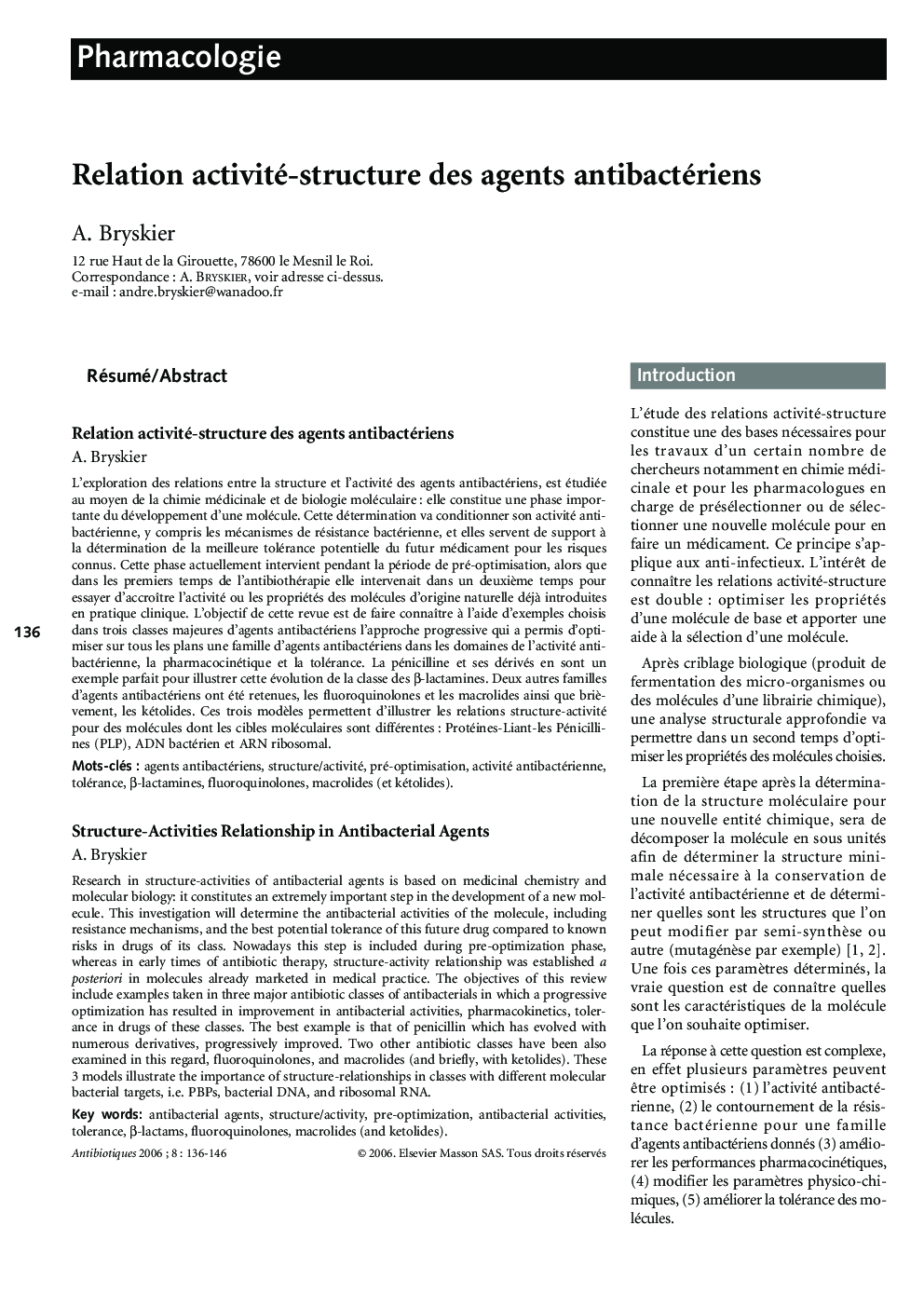| Article ID | Journal | Published Year | Pages | File Type |
|---|---|---|---|---|
| 3396194 | Antibiotiques | 2006 | 11 Pages |
Abstract
Research in structure-activities of antibacterial agents is based on medicinal chemistry and molecular biology: it constitutes an extremely important step in the development of a new molecule. This investigation will determine the antibacterial activities of the molecule, including resistance mechanisms, and the best potential tolerance of this future drug compared to known risks in drugs of its class. Nowadays this step is included during pre-optimization phase, whereas in early times of antibiotic therapy, structure-activity relationship was established a posteriori in molecules already marketed in medical practice. The objectives of this review include examples taken in three major antibiotic classes of antibacterials in which a progressive optimization has resulted in improvement in antibacterial activities, pharmacokinetics, tolerance in drugs of these classes. The best example is that of penicillin which has evolved with numerous derivatives, progressively improved. Two other antibiotic classes have been also examined in this regard, fluoroquinolones, and macrolides (and briefly, with ketolides). These 3 models illustrate the importance of structure-relationships in classes with different molecular bacterial targets, i.e. PBPs, bacterial DNA, and ribosomal RNA.
Keywords
Related Topics
Health Sciences
Medicine and Dentistry
Infectious Diseases
Authors
A. Bryskier,
